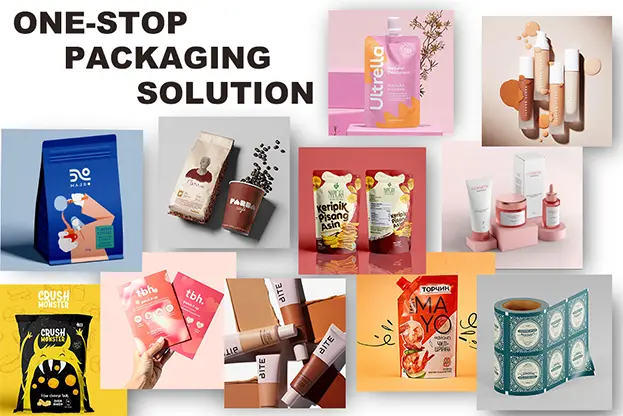Flexible packaging printing, including flexo and gravure, is transforming the packaging industry with its versatility, efficiency, and advantage in label production. This method offers cost-effective solutions, reduces waste, and provides high-quality results using flexible printing techniques and flexible printing plates. From vibrant colors to intricate designs, flexo flexible packaging printing meets diverse needs across various sectors, including label type. It ensures products stand out on shelves while maintaining print durability and label sustainability using flexo type. Scroll down to discover our top picks and reviews of the best flexo flexible packaging printing and label options available today.
1. Rotogravure Printing
Rotogravure printing excels in high-volume reproduction, making it ideal for long-run magazine and catalog production. This print method uses engraved cylinders to transfer ink onto the substrate, ensuring unparalleled image quality and depth of color. Each cylinder is meticulously engraved with tiny cells that hold the ink for print. When the cylinder rotates, it picks up ink from a fountain roller and transfers it to the print material. This process allows for consistent and high-quality prints. Despite high initial setup costs due to the engraving process, rotogravure printing becomes cost-effective for large orders. The durability of the cylinders means they can be reused for multiple print runs, reducing long-term costs. In the food packaging industry, rotogravure is favored for its ability to print on various materials like films and cartons. Its precise color reproduction ensures that food images look appealing and accurate in print. Printing is extremely fast, with modern machines capable of producing fourteen meters of film in less than a second!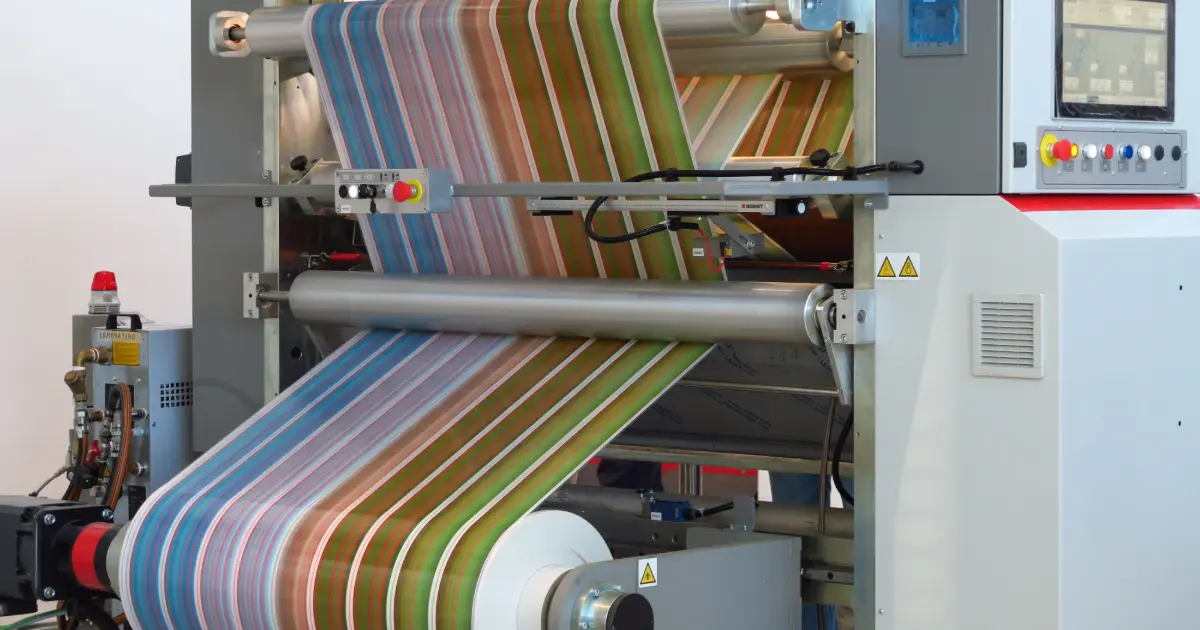
2. Digital Printing
Digital printing is a form of screen printing packaging that uses inkjet technology to apply images and branding components directly to plastic substrates. Digital printing offers unmatched flexibility and speed for short-run, customized packaging solutions. Unlike traditional printing methods, it eliminates the need for plates, which reduces setup time and costs significantly. This makes it ideal for businesses needing quick turnarounds. Digital printing systems can produce high-quality images and text directly from digital files. This ensures that every print is sharp and vibrant, maintaining consistency across all prints. For example, inkjet technology allows for precise color matching and detailed designs on various printing surfaces, providing a superior finish compared to aniline printing. In the print industry, digital printing has become a popular printing technique due to its efficiency and adaptability. It supports a wide range of materials and is perfect for personalized print packaging needs.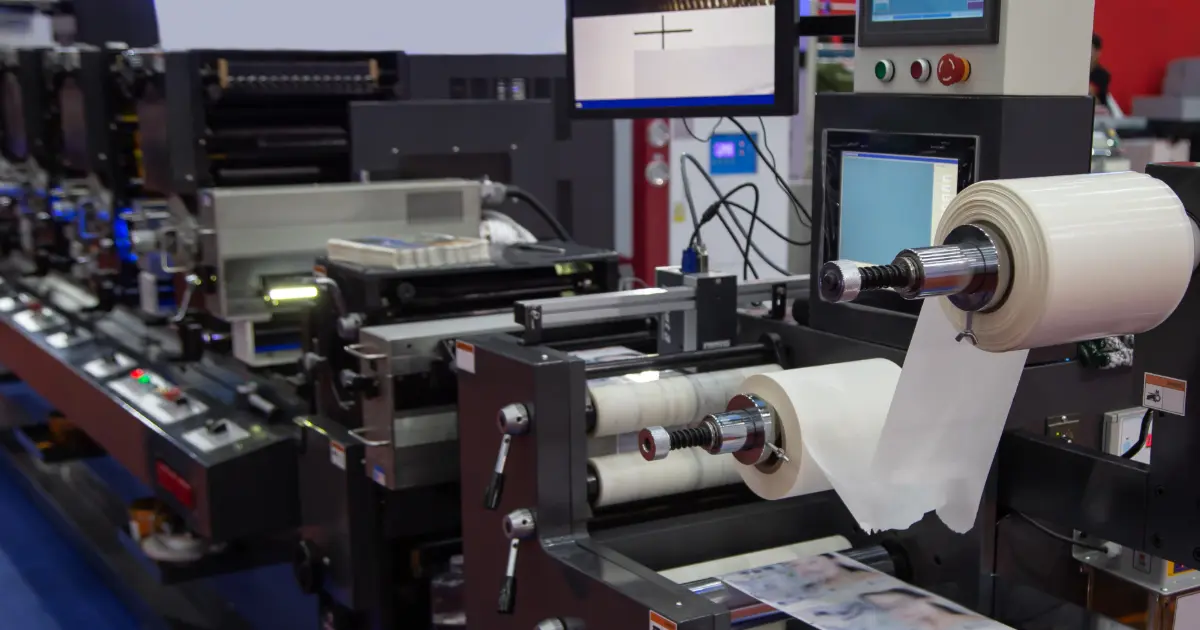
3. Flexography Printing
Flexography printing, often called flexo, is a widely used and efficient printing method. It uses flexible plates made of rubber or plastic, which are wrapped around cylinders on a press. These plates can print continuously at high speeds, making the process ideal for large-scale jobs.
The process starts with creating a master plate that holds the image to be printed. This plate is coated with fast-drying, low-viscosity inks that transfer the image onto various materials. Flexo can print on many surfaces, including paper, plastic, and metallic films, which makes it very versatile.
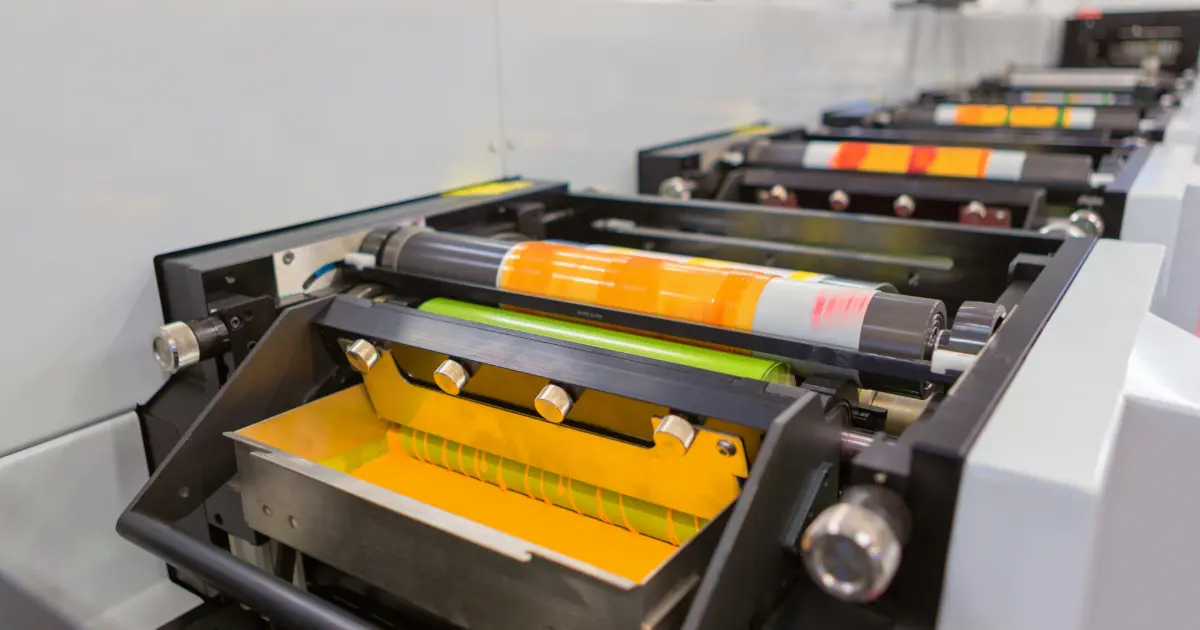
4. Offset Printing
Offset printing offers precision and high-quality output for flexible packaging. It is ideal for detailed graphic work, ensuring sharp print images and text.
The process uses a printing plate to transfer ink onto paper or other materials. This method supports both CMYK and Pantone colors, which helps maintain print brand consistency.
Using offset lithography, operators can handle medium to large print runs efficiently. The economies of scale make it cost-effective when producing larger print quantities.
Modern advances in printing machines have improved the positioning of sheets, reducing waste. Operators can also adjust the amount of ink applied, ensuring uniformity across all prints.
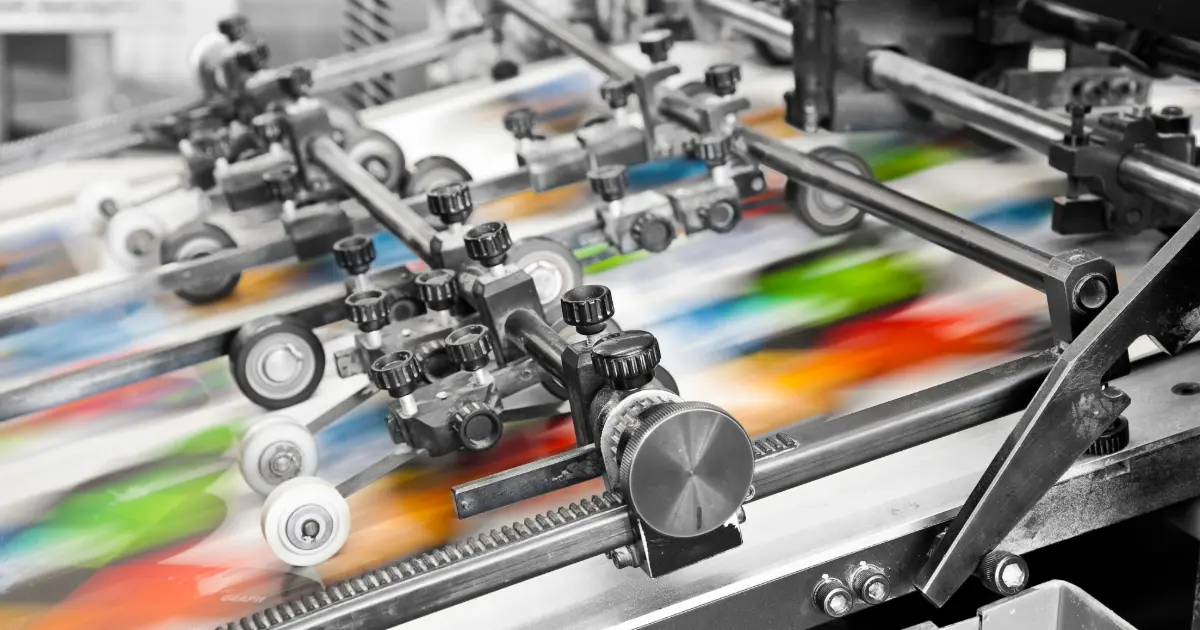
5. UV Printing
UV printing uses ultraviolet light to instantly cure inks, leading to faster production times en reduced drying space. This method allows for immediate handling and packaging of printed materials.
The durability of UV printing stands out. It offers resistance to fading, making it ideal for print products exposed to sunlight or harsh conditions. This is crucial for items like outdoor signage en product labels that need to withstand environmental stress and print.
Environmentally, UV printing has significant benefits. It produces lower emissions and consumes less energy compared to traditional drying methods. This makes it a more sustainable option for businesses looking to reduce their carbon footprint.
UV printing also employs photopolymer technology, which enhances the quality and precision of the print. The use of photopolymer in the print process ensures sharp and vibrant colors, providing a professional finish.
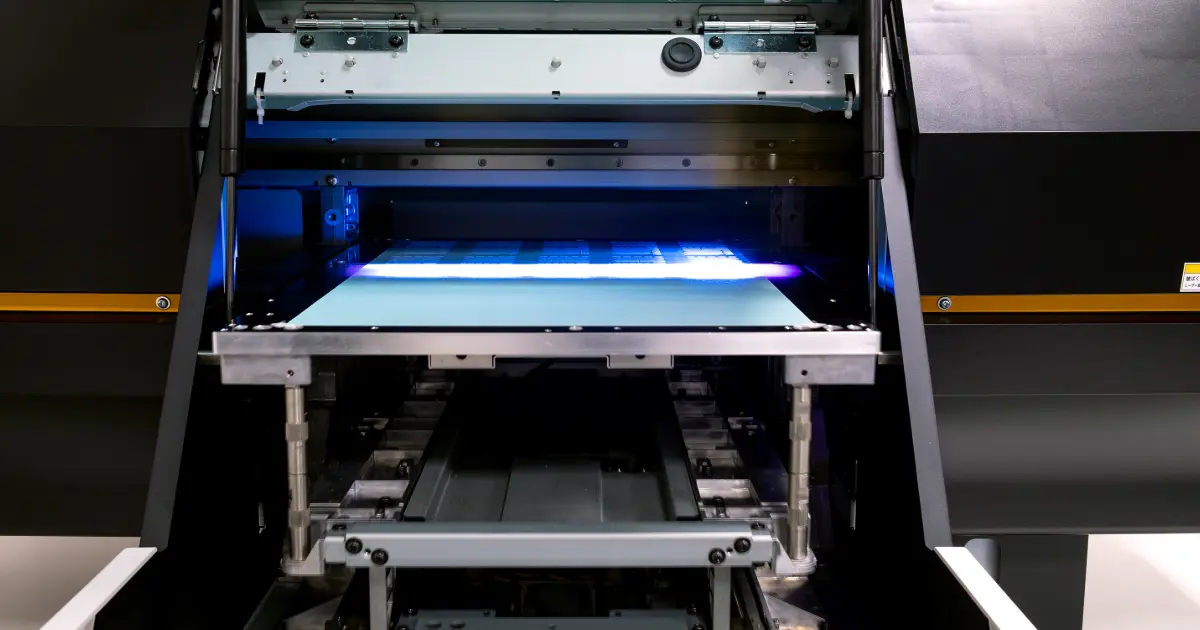
Summary
Flexibele verpakkingsdruk omvat verschillende technieken zoals rotogravure, digitaal en offsetdrukwerk, elk met unieke voordelen. Lamineren, UV-druk, reliëfdruk, metallic inkten, en matte afwerkingen verhogen de visuele en functionele aantrekkingskracht van verpakkingen. Duurzame opties worden steeds belangrijker om de milieu-impact te verminderen.
Deze methoden bieden bedrijven veelgebruikte oplossingen om aan diverse behoeften te voldoen. Het omarmen van deze technieken kan leiden tot innovatieve en milieuvriendelijke verpakkingen. Lezers worden aangemoedigd om deze opties verder te verkennen en hun toepassingen in eigen projecten te overwegen.
Bij het selecteren van de beste drukmethode voor uw productverpakking is het belangrijk om factoren te overwegen zoals het type materiaal, de complexiteit van het ontwerp en uw budget. Neem contact op met onze expert om uw eigen flexibele drukverpakkingszakken te krijgen.
Digitaal drukken maakt kleine oplagen en snelle levertijden mogelijk. Het is zeer aanpasbaar, waardoor het geschikt is voor promotieartikelen of limited editions. Deze methode vermindert afval en opstartkosten.
Lamineren verbetert de duurzaamheid en barrière-eigenschappen. Het beschermt tegen vocht, zuurstof en licht. Dit proces verlengt de houdbaarheid en verbetert het algemene uiterlijk van de verpakking.
